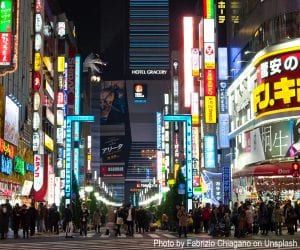In 2010 it was announced that for the first time ever, over half of all people in the world were living in urban areas. Since 2010, the number of city dwellers has continued to soar. In fact, in 2050, it’s predicted that over two-thirds of the global population (that’s almost 7 out of every 10 people) will live in urban areas.
But this drastic urban growth will not occur uniformly throughout the world, a fact that has many demographers, economists, and social planners on edge. In this recent report from the UN, it is noted that about 90 percent of urban growth will take place in African and Asian countries – “India, China and Nigeria are expected to account for 37 percent of the projected growth, with India adding 404 million urban dwellers, China 292 million, and Nigeria 212 million.” Why is this reason for concern?
Here are two consequences of people moving to cities:
- While urbanization has traditionally been associated with increased industrialization and economic prosperity, many cities currently experiencing growth lack the infrastructure needed to support more people. It will become increasingly important that cities are able to offer jobs, education, and basic needs like housing, electricity, and public transportation. A city that grows without these structures in place is at high risk for poverty and instability.
- A city that grows too quickly can also experience an array of environmental issues. With more people living in a condensed space, streets can become congested, pollution levels rise, sanitation systems can be overwhelmed, and public health can decline.
Benefits of increasing urbanization?
However, an increase of population in cities may not be all bad news. One positive outcome is that when people are more concentrated, more open spaces can remain undeveloped. This land could be saved for agriculture or, assuming there are programs in place, environmental initiatives such as habitat restoration or forest regeneration. In addition, if a city is able to prepare for their projected growth, they may be able to avoid any social or environmental consequences and economically prosper as a result. Of course ensuring these outcomes requires planning and sustainable urban design – a high bar for many of the developing countries expected to see the most growth. As highlighted in a recent Reuters article, John Wilmoth, director of the Population Division of the UN’s Department of Economic and Social Affairs, asserts that “Managing urban areas has become one of the most important developmental challenges of the 21st century.”



